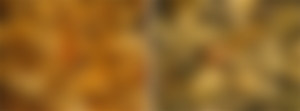Sand is possibly something you take for granted; it gets in your hair and your clothes and all over your food at the beach. But sand is also fascinating. Sandy beaches are dynamic: sand accumulates slowly over time, travels down the coast with longshore drift, is removed from the beach by large waves during storms, and can be redeposited back on the beach from offshore banks during calm periods. Sand is typically made mostly of varying amounts of material weathered from inland rocks (or seacliff material) and transported to the beach on the wind or in rivers, and/or shells and other hard parts precipitated out of the ocean water by marine organisms.
Sand therefore records processes at a variety of timescales. Looking closely at sand under a microscope, we can determine the mineral or organismal composition of the sand and determine where it originated, and what kind of rocks or organisms created the sand. For instance, look closely at these snapshots-under-the-microscope of sand samples below:

Just by looking at these samples, we can make some guesses about where they came from. The sand on the left has some black grains and a lot of glassy green grains (plus some white shelly-looking bits). The glassy green grains are olivine, a mineral often found in basaltic rocks-which explains what the black parts are (bits of basalt). Basalt makes up the ocean crust, and hot-spot islands like Hawaii, which is precisely where this sample is from. The sand in the middle is purple-ish due to a high concentration of garnet crystals-commonly found in metamorphic rocks. This sand is from the Big Sur coast of California, with many metamorphic rocks created near an ancient subduction zone. The sand on the right is 100% composed on shells, coral skeleton, and other biological precipitates. There is no evidence of rock fragments, which makes sense-this sand is from the Maldives, a group of coral atoll islands in which the underlying basement rocks have sunk out of view beneath the sea surface.
Aside from its origin, sand also contains clues about the history it has experienced, and the physical environment in which it currently resides. For instance, compare the amount of rounding in the sand samples below. The sand on the left is from a steep, small beach in Hawaii exposed to powerful winter ocean swells. Smashing into one another repeatedly has polished these sand grains, as they are tossed in the surf. The sand on the right is from a different beach in Big Sur, where a river cascading down the steep mountains backing the beach deposits freshly weathered grains of rock that have not traveled far and have yet to be rounded and smoothed.

Similarly, these two sand samples below might hint to us about the wave energy at a particular beach. The sand on the left is composed of small fine grains, while that on the right is made of larger, heavier mineral grains. This difference suggests that the beach on the right is typically inundated with larger waves that carry lighter, smaller particles away and leave behind only the larger sediments.
Sand can also hold interesting clues about the marine organisms that live nearby and contributed to the sand formation-for example, the types of shells and their relative abundance can used as an indicator of the health of nearby ecosystems.




amazing writing and very beautiful photograpy dear.